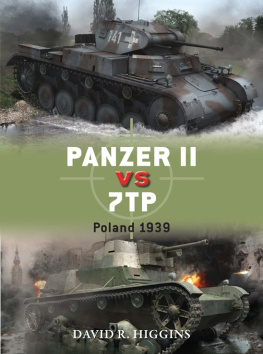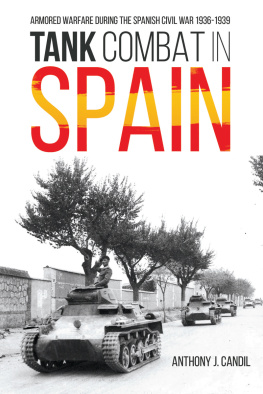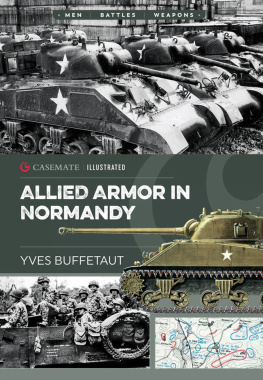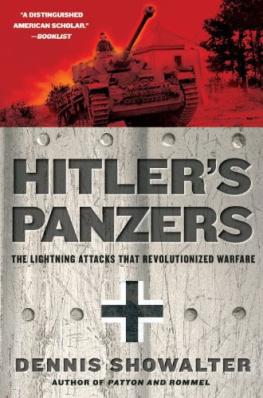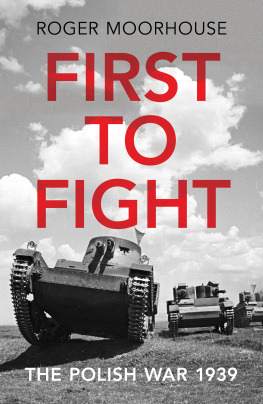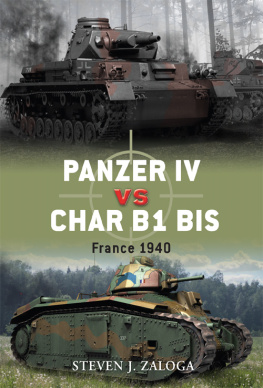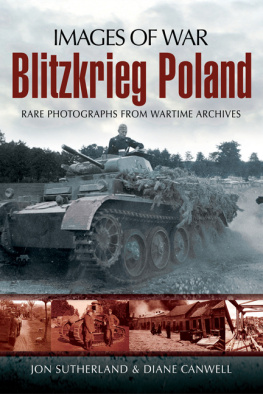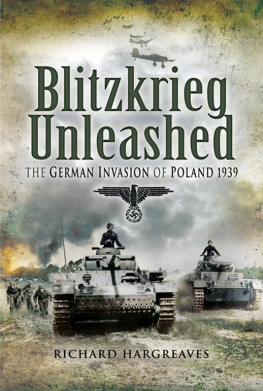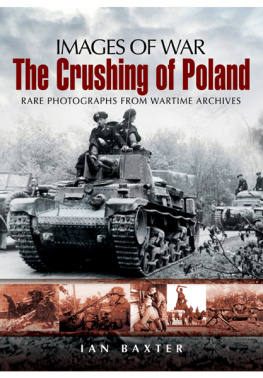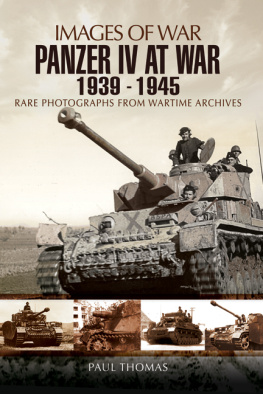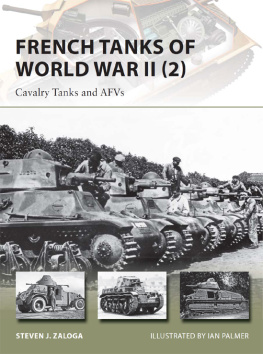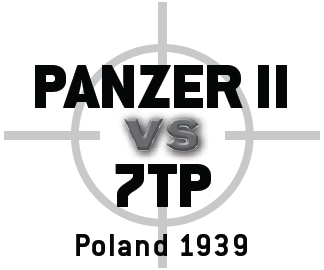
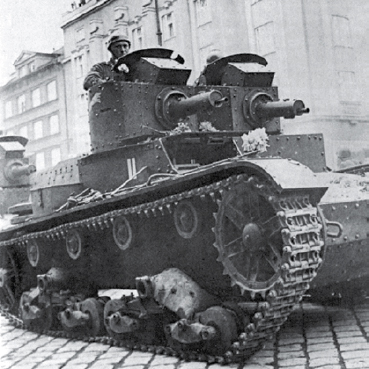
DAVID R. HIGGINS
CONTENTS
INTRODUCTION
As with most conflicts, during the German invasion of Poland in 1939, both participants were forced to employ what military assets were available, rather than those desired. Concerning tanks, Germanys inability to produce sufficient numbers of purpose-built PzKpfw (Panzerkampfwagen, or armoured fighting vehicle) III and IV combat vehicles meant the lighter, much more numerous PzKpfw II was thrust into the role. For Poland, an equally light, but more suitable 7TP (siedmiotonowy polski, or 7-tonne Polish) could be fielded, but not in quantities needed to greatly affect the larger battlefield. Although these two armoured fighting vehicles (AFVs) were created as light vehicles, with similar intended battlefield roles, the doctrinal and organizational framework in which each operated represented very different military philosophies and would help to shape the evolution of tank warfare throughout World War II.
On 31 August 1939, German security personnel and convicts dressed in Polish Army uniforms conducted an attack on a radio station near the GermanPolish border at Gleiwitz. Having burst into the facility to broadcast a patriotic announcement in Polish and fire a few dramatic rounds before leaving, the overseers killed their unwilling cohorts, and left their bodies as evidence of Polish provocation. A subsequent German radio broadcast railed against the unprovoked attack on the Reich, as a justification for war. At 0434hrs on 1 September, German Ju 87B-2 dive-bombers unsuccessfully targeted the detonators and wiring that Polish engineers would use to destroy the rail and road bridges over the Wisa River at Tczew to prevent their intact capture. Some ten minutes later, the Jutland-era German battleship, Schleswig-Holstein, fired into the port city of Danzig/Gdask roughly 30km to the north, signalling the official start of the campaign, and potentially a wider European war. German ground and tactical air forces followed up by crossing the border in what was essentially a large double envelopment designed to converge on Warsaw and its 1.2 million citizens, and points further east along the Bug River, and the predetermined demarcation line with the Soviets. The recently signed Russo-German Pact, which secretly identified their respective zones of control over bordering territories, allocated eastern Poland to Stalins control.
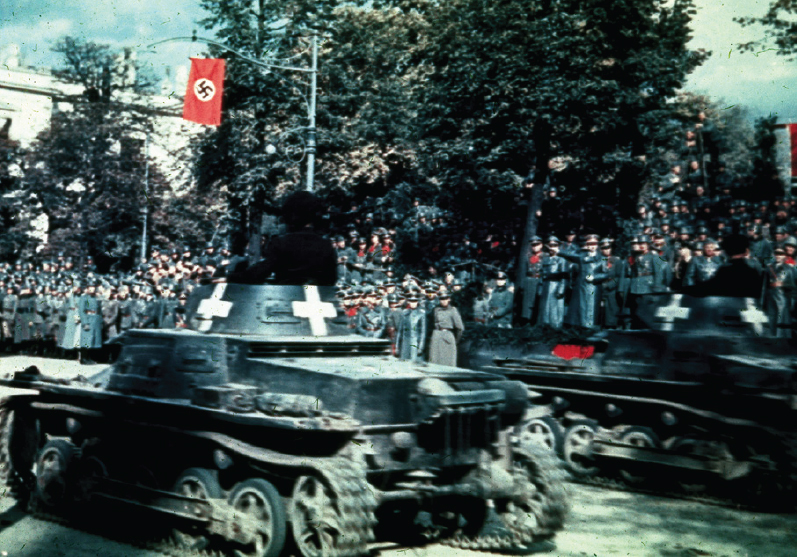
With the fighting in central Poland winding down, Hitler presided over an 8. Armee victory parade in the recently captured enemy capital on 5 October 1939. Although PzKpfw I Ausf B, such as these, were ill-suited for direct combat, necessity often dictated otherwise; including the fight for Warsaw. Soon to gain fame commanding 7. Panzer-Division in the West, Generalmajor Erwin Rommel a distant cousin of Ld Armys commander, Major General Juliusz Rmmel stands next to Hitler as head of the Fhrerbegleithauptquartier (Fhrer Escort Headquarters) having provided security for the event. ( IWM COL 149)
The spearhead formation of Nazi Germanys 10. Armee, General der Kavallerie Erich Hoepners XVI. Armeekorps (mot.) was tasked with defeating Polands Ld Army; the German corps was then to secure crossings over the Wisa River, some 300km to the north-east, and strike Warsaw. At 0500hrs on 1 September 1939, 4. Panzer-Division, with 324 tanks and 101 other assorted AFVs, set off from Grunsruh towards the three hamlets of Mokra, on what promised to be a clear, warm day. Meanwhile, 1. Panzer-Division pushed towards Kobuck. Covering the corps right flank, 14. Infanterie-Division advanced towards Czstochowa, with 31. Infanterie-Division as corps reserve. Awaiting the German onslaught along an extended front, Colonel (qual.) Julian Filipowicz established most of his Woyska Cavalry Brigade along the crescent-shaped wooded area encompassing the three Mokra villages north of Kobuck. Although such Polish formations used horses for manoeuvre, they fought as infantry that was reinforced with towed weapons that could deliver considerable firepower.
The ensuing battle of Mokra would demonstrate to the world the power of the Blitzkrieg, with the PzKpfw II at the forefront of the German drive to Warsaw. The relatively easy German advance ended at around 0800hrs, as 4. Panzer-Divisions spearheads advanced beyond Krzepice; Polish soldiers that were assumed to have been killed or incapacitated, suddenly opened fire, inflicting heavy casualties that forced the Germans back. In advance of a renewed offensive push, elements of 4. Panzer-Division pushed Polish cavalry back into the Mokra Woods at around 1000hrs. As German tanks manoeuvred to exploit the situation, the 1920s-era Armoured Train 53 suddenly emerged from the woods to lob 75mm rounds into their midst, as Armoured Train 52 remained out of sight further behind. In the resulting panic and chaos, defending cavalry covering the Polish right managed slowly to extricate itself eastwards.
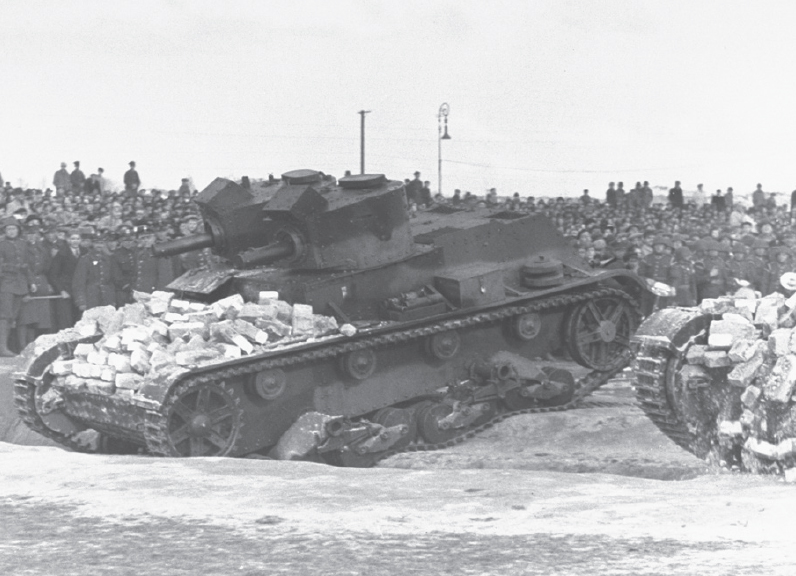
These dual-turret 7TPs are pictured during a pre-war public demonstration. (John Phillips/The LIFE Picture Collection/Getty Images)
At 1300hrs, the German main attack on Mokra began, using 100 tanks that spread through the three hamlets, only to have Armoured Train 53 keep them at bay. With Woyska Cavalry Brigade largely spent, at 1600hrs, tankettes of Polands 21st Armoured Troop came out of reserve to engage several German AFVs. Polish 37mm antitank guns, backed by artillery, again rebuffed the German advance; in one instance, panicked German rear-echelon supply personnel thought they would be overrun, and only direct intervention of Generalmajor Georg-Hans Reinhardt, 4. Panzer-Divisions commander, stopped them. By days end the Polish defenders had inflicted considerable casualties in men and matriel, but with other sectors having given way Woyska Cavalry Brigade finally withdrew that night. German spearheads soon followed to maintain the advance with minimal interruption, and open the route to Piotrkw.
With Woyska Cavalry Brigade, and its flanking formations, under increasing pressure to conduct an effective, elastic defence, Polands Prusy Army was forced to allocate formations piecemeal to the fight to maintain a stable front line. On 27 August, Polands 2nd Light Tank Battalion (2nd LTB) had begun accepting reservists and equipment, and organizing, as part of its mobilization in urawica near Przemyl far to the east. As some single-turret 7TPs only had machine guns as they awaited their 37mm guns to be fitted, it was 29 August before the complete formation was combat-ready. In excellent spirits and physical condition, all assembled took the oath before leaving. At 0400hrs on 30 August the battalion had boarded two trains for a circuitous, 900km route through Lww, Kowel, Brze, Siedlce, Warsaw, Sochaczew and finally the Bednary station just shy of owicz on 1 September. As war had commenced in the interim, on arrival at 1700hrs the units commander, Major Edmund Karpow, ordered it to move 4km south to establish positions in a wooded area near Nieborw for concealment. Having transitioned to front-line duty, 2nd LTB was subsequently subordinated to Major-General Juliusz Rmmels Ld Army where it was to defend the border south-west of Warsaw against 8. Armee and 10. Armee.
Next page
